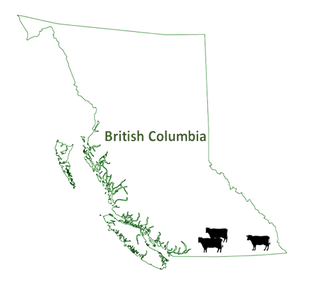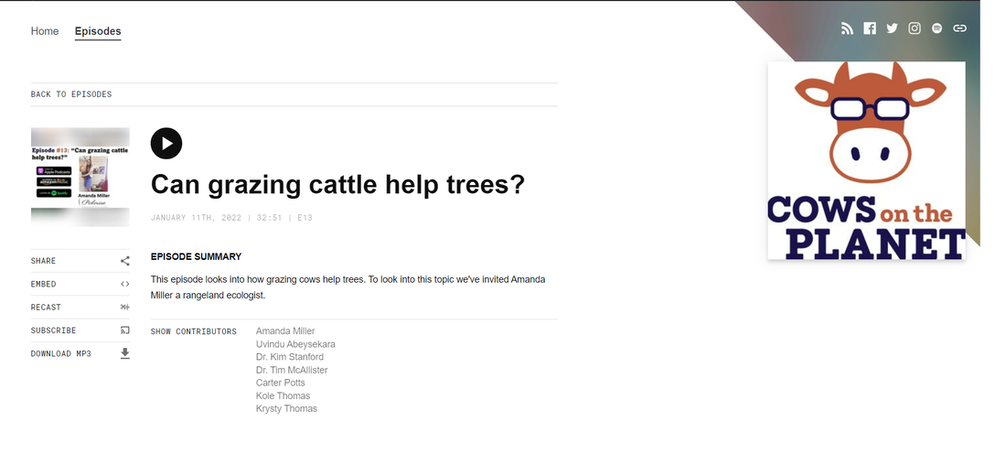What is the wildfire risk reduction project?
This is a pilot project that uses targeted cattle grazing to reduce fire risk in lands adjacent to communities. Grazing is used to decrease fine fuels (grasses), reducing the potential impact of wildfires on communities. Research plots and research infrastructure are in place to monitor the results of the pilot projects.
Why grazing for fuel management?
One of the lessons learned over the 2017/18 fire seasons in British Columbia was that grazing changed fire behaviour by helping slow, turn, or stop fires from moving across the landscape. This was mainly through reductions in fine fuel loads.
Most fuel management projects focus on activities that target the removal of trees, decreasing the number of trees per hectare, changing species, or pruning/removing understory.
These activities open up the forest canopy, resulting in increased grasses and shrubs, which when dry become a volatile and easily ignited fuel type. Annual growth of grasses and shrubs without any removal will continually increase the fine fuel load and lead to increased potential wildfire intensity over time.
This program uses livestock grazing to protect our lands, forests, and communities.
Mowing or other mechanical treatments could be used to manage the fire risk, but using grazing animals is a cost-effective approach that makes use of existing resources and grazing agreements and supports local food production.
Although fine fuel reduction is the primary objective of the project, other objectives include maintaining important values such as wildlife habitat, biodiversity, and ecological integrity.
Most fuel management projects focus on activities that target the removal of trees, decreasing the number of trees per hectare, changing species, or pruning/removing understory.
These activities open up the forest canopy, resulting in increased grasses and shrubs, which when dry become a volatile and easily ignited fuel type. Annual growth of grasses and shrubs without any removal will continually increase the fine fuel load and lead to increased potential wildfire intensity over time.
This program uses livestock grazing to protect our lands, forests, and communities.
Mowing or other mechanical treatments could be used to manage the fire risk, but using grazing animals is a cost-effective approach that makes use of existing resources and grazing agreements and supports local food production.
Although fine fuel reduction is the primary objective of the project, other objectives include maintaining important values such as wildlife habitat, biodiversity, and ecological integrity.
When will the cattle be grazing?
The number of cattle and duration of the grazing period is dependent on the amount of available forage, and when the grasses become developed enough to withstand grazing. This can be as early as late April and can last from 1 to 4 weeks.
How will the projects be monitored?
A monitoring program has been established with researchers and range officers to track levels of fine fuel reduction and to ensure that values such as wildlife habitat, biodiversity, and ecological integrity are being maintained or improved.
Who is involved in this project?
The British Columbia Cattlemen’s Association is partnering with the Province of British Columbia, local stakeholders, and grazing tenure holders on this pilot project.
Interested in Learning more?
Rangeland ecologist Amanda Miller discusses how grazing cattle are helping to reduce wildfire risk in Okanagan communities.


